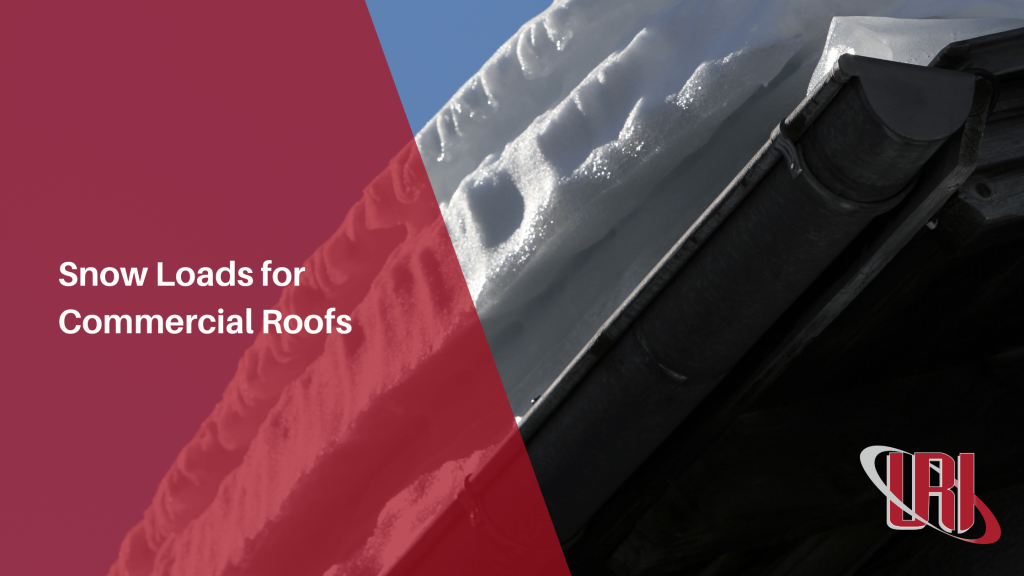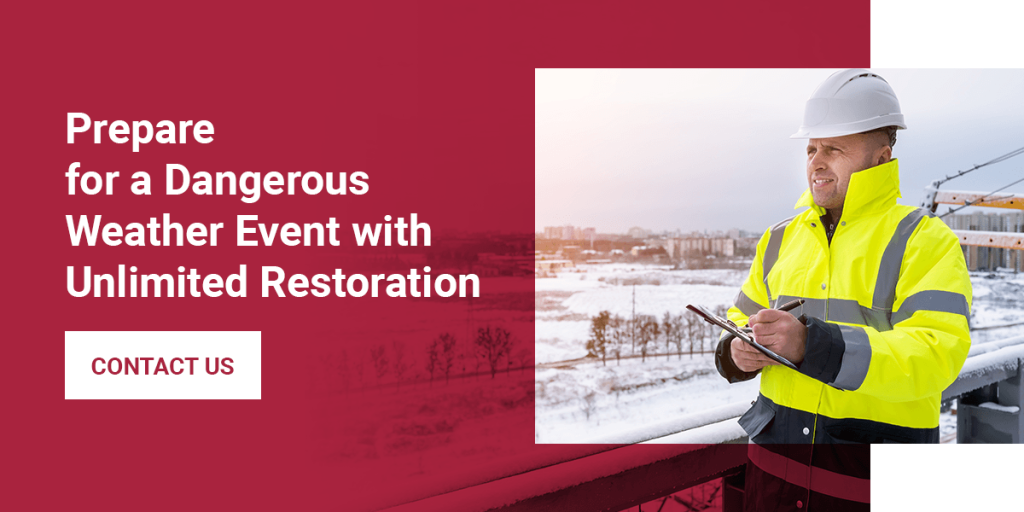
Every roof has a dead load and a snow load that depends on its structure and materials. It’s essential to know your commercial roof’s snow load and continually monitor for signs of collapse during and after winter storms.
Snow load is the pressure exerted on your roof after a snowfall resulting from the weight of the compacted snow. There’s your roof’s dead load, which is the normal, permanent pressure exerted on your roof from its fixtures and materials — and then there’s live load. Live load is ever-changing, and it depends on the density of the snow.
The force exerted onto your roof from the collected snow and ice can differ depending on the snow’s moisture content as well. The structure of your roof, the moisture content of the snow, the amount of accumulation and its distribution impact your roof’s ability to bear the snow load.
Your roof’s structure and materials play critical roles in supporting heavy snow loads. Naturally, low-sloped roofs are more likely to collect snow than pitched roofs. A low-sloped roof made of a nonslip material like asphalt shingles is even more likely to hold onto snow than a metal pitched roof. Flat, saw-toothed and stepped roofs with valleys between slopes can also collect more snow than other roofs.
If your commercial property is older — or was built before the enforcement of building codes — it’s a good idea to invest in a qualified inspection of your roof. Once you know your building’s snow load, you can determine when your roof might be at risk after a storm.
But what are the imminent warning signs of a dangerous roof or a potential collapse? According to the Federal Emergency Management Agency (FEMA), warning signs can include:
If you believe your roof may be at risk of collapse, contact a local building authority or qualified professional to perform a roof inspection. If possible, have a disaster preparedness plan in place so you know who to call after a winter storm. Your roof might have trip hazards buried beneath snow and ice, like vents or skylights, so it’s best to leave the job to the experts.

Minimize downtime after disaster strikes with a well-rounded disaster preparation plan. Contact us today to learn more about our disaster planning training services!